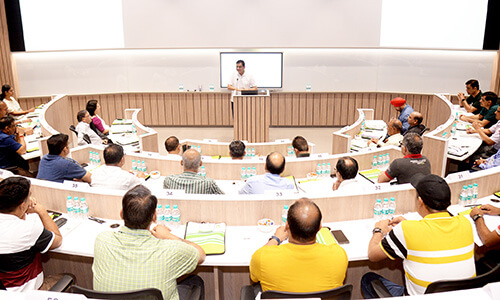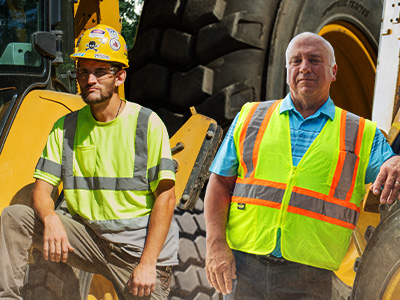And I’ve a third guest to introduce.
Welcome back to Global Trends, Piero Torassa, field engineer with BKT.
Piero has been working at BKT since 2010 and today he is Field Engineer Manager at BKT Europe. His job consists in testing tires – he monitors the tires’ performance and the quality of BKT’s products.
Welcome back to Global Trends, Piero, come and join us!
Gentlemen, delighted to have you all back! Piero, a very warm welcome to the show.
Yes, thank you!
I see you are excited; well, we are very excited to have you with us! You have been listening to Paul and Jonathan, I am sure, so let’s find out what do you think on this subject, too!
What I’d like to ask, now I’ve got the three of you together, is this: you’re all suppliers to the industry, so how can you best advocate or facilitate the adoption and integration of alternative energies?
Piero, let’s hear from you first.
Well, we need to think about energy efficiency overall. For suppliers like us, we need to assure our customers that the embedded energy consumed by the whole value chain, then we need to think about the energy that’s used not just digging material out of the ground, and in processing, but also what’s used to produce the equipment, the consumables, that makes it all possible.
So, with BKT as a tire manufacturer, what does that look like?
We are ourselves using renewable energy in the production of our tires. But we can also look at tire efficiency, ratings, load capacity, and so on. Normally, in OTR, we talk about star rating, which is the capacity of the tires to take load. Fifteen years ago, we were at one star rating, now we’re at three stars.
We also need to consider how these new energies affect our own products. Electric trucks, with their batteries, might need to carry more load. We need to change the rating – two stars to three stars.
These factors affect production and development. The carcass will be different, we have different belting, we need to reconsider the compound formulation.
In a very broad way, alternative energy means better efficiency. The same work in a reduced time, so we can increase productivity. The key thing is that we’re ready for the energy transition, to help our customers be ready for it too.
Great insight, Piero, thank you.
Jonathan, what’s your take on this?
Advocating for the adoption of alternative energy generation is the easy part - we all know that fossil fuels are finite and ultimately, future generations will rely on different energy generation technologies than that which we rely on today.
But with regards to facilitating the adoption of alternative fuels, I would say the only way to make this happen is really to get the incentives right.
Super, thank you.
Paul, over to you?
To facilitate and accelerate the adoption of alternative energy sources I think it is important to define the goal you want to achieve, the goals you are after, understand the real-world usage of your application and then work with a partner who can help develop and integrate a complete powertrain solution to meet these requirements. Unclear goals and not fully understanding how your applications are actually used may lead to the development of products that don’t meet customer needs which can discourage adoption.
That’s the perfect way to wrap it up - thank you Paul – and there we must leave it!
To the three of you, thank you for joining us today on Global Trends and sharing your knowledge and experience with our audience. We have Paul Muller of Perkins Engines, Jonathan Cohen from Autostem, and Piero Torassa of BKT – thank you, it’s been an absolute pleasure.
You’ll know by now that it’s time for our interactive session, where we ask you to answer a question from us!
First, last episode’s question. We asked you:
How much is the International Energies Agency predicting the lithium demand will be grown by 2050?
And so, the answer is: The International Energy Agency predicts a 26-fold increase for lithium by 2050.Now, if you thought it was 100-fold well, yes, that was a much earlier prediction and not their latest figures!
So, who got it right? I saw a few correct answers on the socials – well done!
For those of you looking to continue your unblemished score…here’s another one:
During the show Paul spoke about how Perkins has ensured its engines can work on HVO, a ‘green’ fuel. But what’s the chemical process needed to make HVO?
So, tune in next time – our last episode in the series – to hear the answer!
There we are, at the end of another episode. But not quite yet the end of the series: I’ll be back for Episode 4, when we’re going to look at Net Zero: how can we decarbonize the mining industry?
Thank you for tuning in, until next time!








